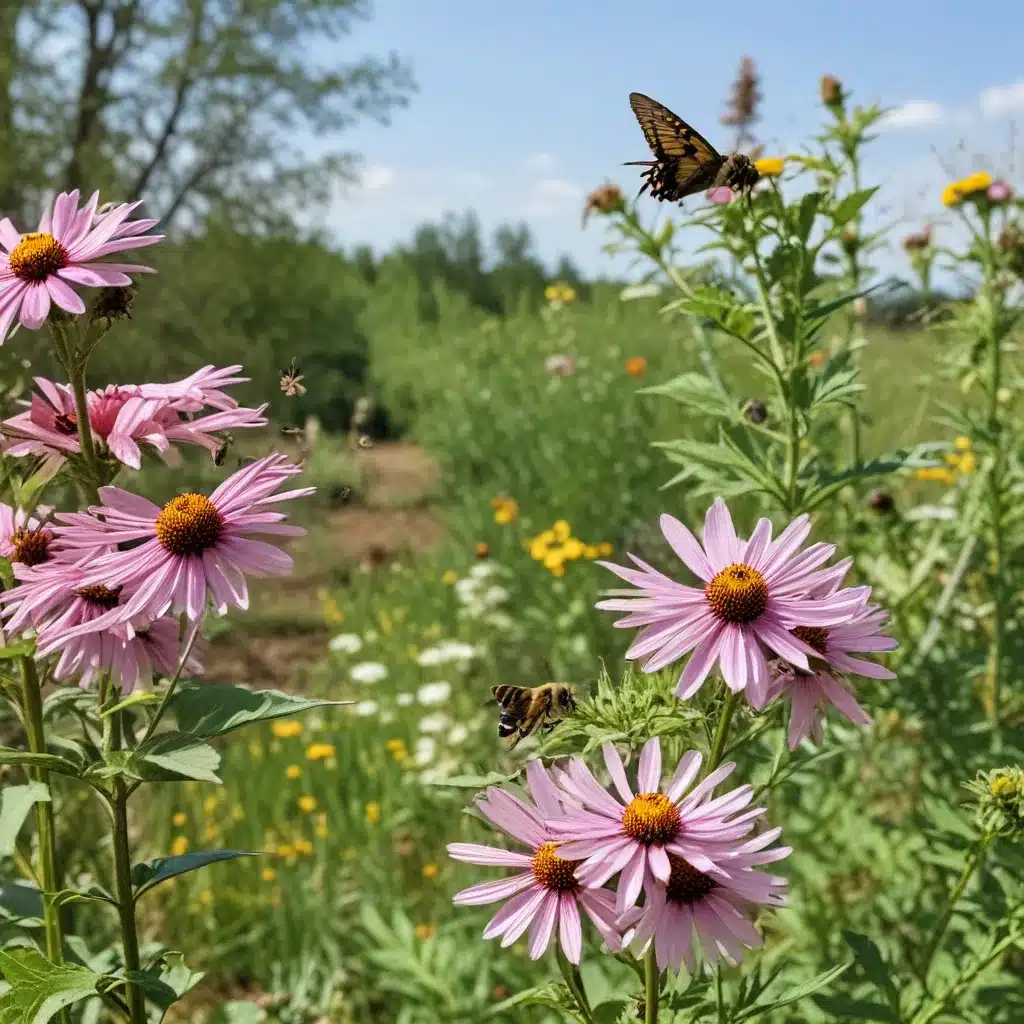
As a farm educator at Crooked Pines Farm, I’m always excited to share ways we can create thriving habitats for the incredible diversity of wildlife that call our rural landscapes home. One of the most rewarding aspects of running an educational farm is the opportunity to inspire families to get outside, explore the natural world, and cultivate a deep appreciation for the creatures that pollinate our crops, control garden pests, and bring vibrant color and song to our days.
At the heart of a healthy, biodiverse ecosystem are the pollinators – the bees, butterflies, moths, hummingbirds, and other vital creatures that transfer pollen between flowers, enabling the production of fruits and seeds. By designing our gardens and landscapes with their needs in mind, we can ensure a continuous banquet of nectar and pollen sources throughout the growing season.
When selecting native plants for your pollinator oasis, prioritize species that offer a wide range of bloom times, from early spring through late fall. This ensures your local pollinators have a reliable food source, even as individual plants come and go. Some standout native perennials include yarrow, coneflowers, bee balm, Joe Pye weed, goldenrod, and asters. These not only attract a diversity of pollinators but also bring a beautiful, naturalistic aesthetic to your garden.
Beyond just flowers, it’s important to incorporate a variety of plant heights, textures, and foliage colors. Mixing in native grasses, sedges, and shrubs creates a multi-layered habitat that caters to an array of beneficial insects, birds, and other wildlife. When planning your layout, consider planting in drifts or loose groupings to mimic the organic patterns found in nature, rather than strict rows or geometric designs.
Avian Habitat Creation
While pollinators may steal the spotlight, our feathered friends also play a vital role in farm ecosystems. Birds are natural pest control agents, consuming vast quantities of insects, weed seeds, and rodents that can wreak havoc on crops and gardens. Providing them with the resources they need encourages a healthy, balanced population.
Incorporate a variety of bird-attracting plants that offer nutritious berries, seeds, and nectar. Native shrubs like elderberry, serviceberry, and beautyberry are especially valuable, as are flowering perennials like bee balm, sunflowers, and native asters. Cluster these plants together to create visual interest and easy foraging opportunities for your avian visitors.
In addition to food sources, ensure your feathered friends have access to water features like birdbaths, small ponds, or even a simple dish filled with clean water. The soothing sounds of moving water and the opportunity to bathe and drink will draw in a wide range of species. Strategically place these water elements near dense vegetation to offer protection from predators.
For nesting sites, install birdhouses and roosting pockets of varying sizes to accommodate the diverse needs of your local bird community. Offer a mix of open-cup, cavity, and platform-style homes, positioning them in sheltered areas with good visibility.
Sustainable Farm Management
While cultivating a wildlife-friendly landscape is immensely rewarding, it’s also important to consider the broader impact of our growing practices. By embracing organic techniques and integrated pest management strategies, we can create a thriving, self-sustaining ecosystem on our farms and in our gardens.
Eschew the use of synthetic pesticides and fertilizers, which can have devastating effects on pollinators, birds, and other beneficial organisms. Instead, focus on building healthy, nutrient-rich soil through the application of compost, cover crops, and other natural soil amendments. This not only nourishes your plants but also supports the incredible diversity of microscopic life that are the true unsung heroes of a productive garden.
When it comes to pest management, take a holistic approach that encourages beneficial insects to do the heavy lifting. Predatory bugs like ladybugs, lacewings, and parasitic wasps are voracious consumers of common garden pests. Providing them with diverse flowering plants and undisturbed refugia (areas left to rewild) allows these natural allies to thrive and keep problematic insects in check.
Beneficial Insect Attraction
While the importance of pollinators is widely recognized, the vital role of other beneficial insects is often overlooked. These unsung heroes of the garden are not only fascinating to observe but also play a crucial part in maintaining the delicate balance of a healthy ecosystem.
Predatory insects like ladybugs, lacewings, and praying mantises are essential for controlling aphids, caterpillars, and other pests that can devastate your crops and ornamental plants. By providing them with suitable habitat, you’ll welcome these voracious hunters and their larvae, who will happily feast on the “bad bugs” in your garden.
Parasitic wasps, though often misunderstood, are another group of beneficial insects worth celebrating. These tiny wasps lay their eggs inside the bodies of pest insects, effectively eliminating them from the ecosystem. By growing a diverse array of flowering plants, you can attract a wide variety of these miniature heroes and keep your gardens thriving.
At Crooked Pines Farm, we’ve found great success in incorporating native wildflowers, flowering herbs, and undisturbed areas to support the entire web of life, from pollinators to predatory insects. The hum of activity, the flashes of color, and the overall sense of balance and abundance are a true joy to witness. We invite you to join us in nurturing nature and creating your own farm oasis, teeming with diverse and fascinating wildlife.
For more information on creating a wildlife-friendly landscape, be sure to visit Crooked Pines Farm and explore our educational resources and upcoming events. Happy gardening!


